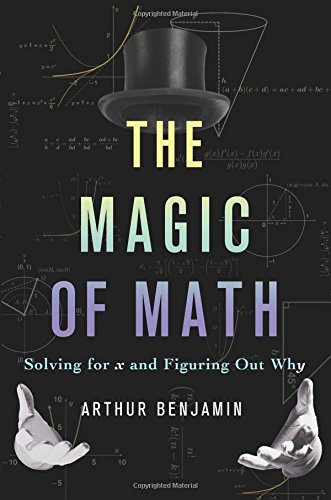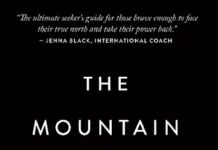| Book Name: | Mining Social Media Finding Stories in Internet Data by Lam Thuy Vo |
| Category: | A Special Books |
| Language: | English |
| Format: | |
| Free Download: | Available |
Mining Social Media Finding Stories in Internet Data by Lam Thuy Vo | PDF Free Download.
| Book Details : | |
|---|---|
| Language | English |
| Pages | 284 |
| Format | |
| Size | 10.7 MB |
Mining Social Media Finding Stories in Internet Data by Lam Thuy Vo
Book Description:
BuzzFeed News Senior Reporter Lam Thuy Vo explains how to mine, process, and analyze data from the social web in meaningful ways with the Python programming language.
Did fake Twitter accounts help sway a presidential election? What can Facebook and Reddit archives tell us about human behavior? In Mining Social Media, senior BuzzFeed reporter Lam Thuy Vo shows you how to use Python and key data analysis tools to find the stories buried in social media.
Whether you’re a professional journalist, an academic researcher, or a citizen investigator, you’ll learn how to use technical tools to collect and analyze data from social media sources to build compelling, data-driven stories.
Learn how to:
• Write Python scripts and use APIs to gather data from the social web
• Download data archives and dig through them for insights
• Inspect HTML downloaded from websites for useful content
• Format, aggregate, sort, and filter your collected data using Google Sheets
• Create data visualizations to illustrate your discoveries
• Perform advanced data analysis using Python, Jupyter Notebooks, and the pandas library
• Apply what you’ve learned to research topics on your own
Social media is filled with thousands of hidden stories just waiting to be told. Learn to use the data-sleuthing tools that professionals use to write your own data-driven stories.
Author of Mining Social Media Finding Stories in Internet Data
Lam Thuy Vo is a senior reporter at BuzzFeed News, where her area of expertise is the intersection of technology, society, and social media data, and where she covers the spread of misinformation, hatred online, and platform-related accountability.
Previously, she led teams and reported for The Wall Street Journal, Al Jazeera America, and NPR’s Planet Money, telling economic stories across the US and throughout Asia.
She has also worked as an educator for a decade, developing newsroom-wide training programs, workshops for journalists around the world, and semester-long courses for the Craig Newmark CUNY Graduate School of Journalism.
She has also spoken at Pop-Up Magazine, the Tribeca Film Festival’s Interactive Day, and TEDxNYC, among other larger events.
Mining Social Media Contents
Part I: Data Mining
- Chapter 1: The Programming Languages You’ll Need to Know
- Chapter 2: Where to Get Your Data
- Chapter 3: Getting Data with Code
- Chapter 4: Scraping Your Own Facebook Data
- Chapter 5: Scraping a Live Site
Part II: Data Analysis
- Chapter 6: Introduction to Data Analysis
- Chapter 7: Visualizing Your Data
- Chapter 8: Advanced Tools for Data Analysis
- Chapter 9: Finding Trends in Reddit Data
- Chapter 10: Measuring the Twitter Activity of Political Actors
- Chapter 11: Where to Go from Here
Introduction to Mining Social Media Finding Stories in Internet Data
We experience the social web in brief moments that flash by, often without ever coming back to them. Liking a photo on Instagram, sharing a post that someone published on Facebook, or messaging a friend on WhatsApp—whatever the specific interaction, we do it once and likely don’t think about it after.
But from swipes to clicks to status updates, our online lives are being captured by social media companies and used to fill some of the largest data servers in the world. We are producing more data than ever before.
We can gain tremendous insight into human behavior by looking at these data points as a whole. We can also investigate the harm done by these systems, from detecting false online actors (for example, automated bot accounts or fake profiles that seed misinformation) to understanding how algorithms surface questionable content to viewers over time.
Let’s look at these data points collectively. We can find patterns, trends, or anomalies and, hopefully, better understand the ways in which we consume and shape the human experience online.
This book aims to help those who want to go from simply observing the social web one post or tweet at a time to understanding it on a larger, more meaningful scale.
What Is Data Analysis?
The main goal for any data analyst is to gain useful insights from large quantities of information. We can think of data analysis as a way to interview a vast number of records: we may ask about unusual single events or look into long-term trends.
Interviewing a data set can be a lengthy process with various twists and turns: it might take a few different approaches to find the answers to our questions, the same way it might take a few different meetings to get a good sense of an interviewee.
Even if our questions are focused and straightforward, getting to the answers can still require us to make several logical and philosophical decisions.
What data set may be useful to examine our own behavior, and how would we get that data? Suppose we wanted to determine the popularity of a Facebook post. Would we measure that in the number of reactions (likes, hahas, wows, and so forth), the number of comments it received, or a combination of both metrics?
If we wanted to understand better how people discuss a specific topic on Twitter, what would be the best way to categorize tweets about it?
So while analyzing data takes a certain amount of technical know-how, it’s also a creative process that requires us to use our judgment intentionally and informally. In other words, data analysis is both science and art.
Who Is This Mining Social Media Finding Stories in Internet Data PDF?
This book is written for people with little to no programming experience. Given the huge role of social media, the internet, and technology in all of our lives, this book aims to explore them in an accessible and straightforward way.
Through practical exercises, you’ll learn the foundational concepts of programming, data analysis, and the social web.
On some level, this book is targeted to someone just like my former self— a person who was fiercely curious about the world but also intimidated by jargon-filled forums, conferences, and online tutorials.
We’ll take a macro and micro approach, looking at the ecosystem of the social web as well as the minutiae of writing code. Coding is more than just a way to build a bot or an app: it’s a way to satisfy your curiosity in a world that is increasingly dependent on technology.
Conventions Used In Mining Social Media Finding Stories in Internet Data eBook
To access and understand data from social media, we need to learn where that data is stored, how to access it, and how we can make sense of it.
In other words, analyzing data from the web involves multiple steps: gathering, researching, exploring, and analyzing it.
In the final step, we’ll also draw conclusions from the data and answer our questions about human behavior and actions that produced it in the first place.
With all that in mind, it’s important to note that this book is not just a compilation of code snippets ready to be plugged in and used.
While it contains scripts that may help you gather and analyze data from the social web, it was first and foremost designed to teach the fundamental concepts and tools of the data analysis process.
Think of the chapters as a step-by-step guide for aspiring researchers who are eager to investigate a specific topic or question. My hope is that you’ll come out with the basics you need to start learning and exploring on your own in this field.
After all, the landscape of social media is in constant flux, which means that you’ll need to be flexible and continually adapt your analytical approach to understanding the data it produces.
Similarly, conventions in this book were chosen and designed to prioritize your learning rather than the elegance of the code. For instance, this code uses a lot of global variables. (Don’t panic! We’ll cover what variables are in the coming chapters.)
While this may not be the most efficient way to code, it’s one that’s friendly to people who might be new to Python. As for the tools covered, I had two main criteria.
I tried to choose tools that are available for free on the web, and that has a relatively low barrier to entry, allowing beginners to get started with simple projects.
Download Mining Social Media: Finding Stories in Internet Data PDF
Author(s): Lam Thuy Vo
Publisher: No Starch Press, Year: 2019
ISBN: 1593279167,9781593279165
Download Mining Social Media Finding Stories in Internet Data by Lam Thuy Vo in PDF Format For Free.
Related More Books
See More POST On : A Special Books









![[PDF] Draw Buildings and Cities in 15 Minutes Draw Buildings and Cities in 15 Minutes pdf](https://www.freepdfbook.com/wp-content/uploads/2021/06/Draw-Buildings-and-Cities-in-15-Minutes-218x150.jpg)








![[PDF] Digital Image Processing An Algorithmic Introduction Using Java Digital Image Processing An Algorithmic Introduction Using Java](https://www.freepdfbook.com/wp-content/uploads/2022/06/Digital-Image-Processing-An-Algorithmic-Introduction-Using-Java.jpg)




![[PDF] 43 Years JEE ADVANCED + JEE MAIN Chapterwise & Topicwise Solved Papers 43 Years JEE ADVANCED (1978-2020) + JEE MAIN Chapterwise & Topicwise Solved Papers Physics PDF](https://www.freepdfbook.com/wp-content/uploads/2022/03/43-Years-JEE-ADVANCED-1978-2020.jpg)

![[PDF] Problems in Physical Chemistry for JEE (Main & Advanced) Problems in Physical Chemistry for JEE (Main & Advanced) Free PDF Book Download](https://www.freepdfbook.com/wp-content/uploads/2022/03/Problems-in-Physical-Chemistry-for-JEE-Main-Advanced.jpg)
![[PDF] Engineering Physics (McGraw Hill)](https://www.freepdfbook.com/wp-content/uploads/2021/05/bafc8c2685bb6823a9c56134f7fba5df.jpeg)

![[PDF] Engineering Chemistry By Shashi Chawla](https://www.freepdfbook.com/wp-content/uploads/2022/05/Theory-And-Practicals-of-Engineering-Chemistry-By-Shashi-Chawla-free-pdf-book.jpeg)
![[PDF] Chemistry: An Introduction to Organic, Inorganic & Physical Chemistry Chemistry: An Introduction to Organic, Inorganic & Physical Chemistry](https://www.freepdfbook.com/wp-content/uploads/2022/04/Chemistry-An-Introduction-to-Organic-Inorganic-Physical-Chemistry.jpg)
![[PDF] Essentials of Physical Chemistry Essentials of Physical Chemistry Free PDF Book by Bahl](https://www.freepdfbook.com/wp-content/uploads/2022/04/Essentials-of-Physical-Chemistry-bahl.jpg)
![[PDF] Biological control of plant-parasitic nematodes: soil ecosystem management in sustainable agriculture Biological control of plant-parasitic nematodes: soil ecosystem management in sustainable agriculture](https://www.freepdfbook.com/wp-content/uploads/2022/05/Biological-control-of-plant-parasitic-nematodes-soil-ecosystem-management-in-sustainable-agriculture.jpg)
![[PDF] Human Anatomy: Color Atlas and Textbook Human Anatomy: Color Atlas and Textbook Free PDF Book](https://www.freepdfbook.com/wp-content/uploads/2022/05/Human-Anatomy-Color-Atlas-and-Textbook.jpg)
![[PDF] Concepts of Biology Book [Free Download]](https://www.freepdfbook.com/wp-content/uploads/2022/05/Concepts-of-Biology.jpg)
![[PDF] Essentials of Biology [Free Download] Essentials of Biology Free PDF BOok Download](https://www.freepdfbook.com/wp-content/uploads/2022/05/Essentials-of-Biology-Free-PDF-Book-Downlaod.jpg)
![[PDF] Human Biology Book [Free Download]](https://www.freepdfbook.com/wp-content/uploads/2022/05/PDF-Human-Biology-Book-Free-Download.jpg)


![[PDF] How to Write Better Essays How to Write Better Essays pdf book](https://www.freepdfbook.com/wp-content/uploads/2023/04/How-to-Write-Better-Essays-218x150.jpg)